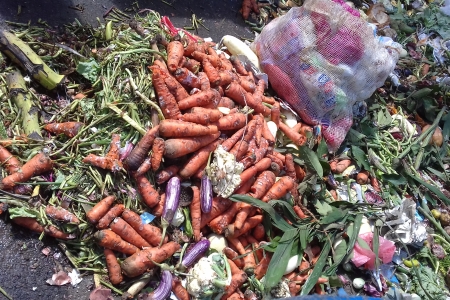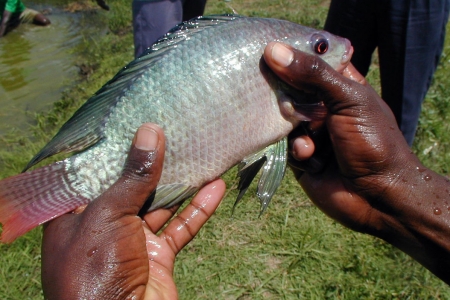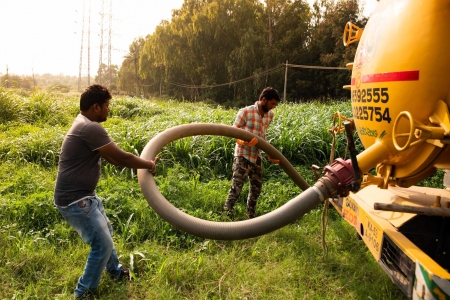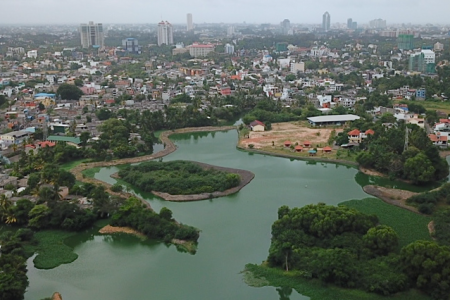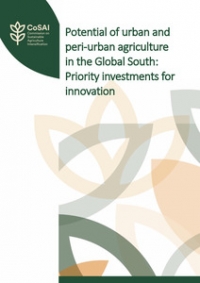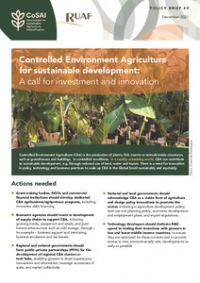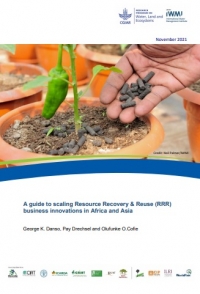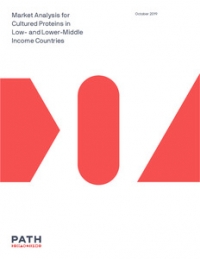As a global society, we waste a third – 1.3 billion metric tons – of the food that we produce every year. In a world where more than 820 million people are undernourished, this is clearly unacceptable. What's more, the vast quantities of wasted food contribute enormously to climate change: if food waste were a country, it would be the third-largest emitter of greenhouse gases in the world.
Target 12.3 of the United Nations Sustainable Development Goals aims to halve per capita global food waste at the retail and consumer levels by 2030. This target is particularly relevant for cities – where food waste by consumers and the retail sector is most widespread and where 68% of the world's population is predicted to live by 2050.
How can we reduce urban food waste?
A new report from WLE provides important insights on reducing urban food waste. Drawing on best practice from a survey of over 400 commercial as well as not-for-profit enterprises around the world, the report describes 18 types of business model across seven categories. The most prevalent business model in the measurement/prevention category monitored and managed excess food and food waste. Redistribution often took place by connecting sellers and buyers of excess food through web-based platforms, and providing logistics services to handle the administration and transportation of excess food from donor organizations to foodbanks – a model that has been especially useful during the Covid-19 pandemic.
Common reselling, value adding, waste collection and recovery methods included transforming excess food and food waste into both food and non-food products: for example, making use of food suitable for human consumption in cafés, soup kitchens or preserved products, and converting waste into bio-plastics. Recycling pathways such as processing for animal feed, compost or energy recovery were also successful.
Which models have worked in the Global South?
Although most case studies described in the WLE report are from higher-income countries, examples from the Global South are also featured:
- redistribution initiatives that follow the 'community fridge' and 'connection platform' models: the charity Feeding India has pledged to donate more than 500 fridges across 100 cities to store surplus food that can be distributed to people in need, and the Malaysian social enterprise Grub Cycle has partnered with local restaurants and cafés, using web-based tools to help them sell and redistribute excess produce to low-income households. Similar support comes from the Robin Hood Army in several countries of the Global South.
- responsible collection of waste: Hasiru Dala Innovations in India provides training and on-site assistance to help event caterers, apartment blocks and restaurants segregate their waste, and transports each waste stream to a recycling partner. Eco Friends in Sri Lanka provides an app platform for consumers to register segregated waste and organize collection.
- recovery of nutrients: in the Colombo District of Sri Lanka, there are about 160 pig farms, many of which partner with hotel operators, restaurants and government canteens to feed around 58 metric tons of food waste per day to their animals.
- recycling: the Bokashi Myanmar Company promotes electricity-free natural composting, providing support to households, restaurants, community centers and schools.
Rolling out food waste initiatives in the Global South
An enabling environment is essential if food waste reduction models are to be more broadly applied in the Global South. It follows then that enterprises seeking to work in specific sectors should consider whether they might be constrained by a lack of public awareness, infrastructure or regulations in areas as diverse as access to finance and safety regulations. Models in the resell, value adding, waste collection and redistribution categories require high levels of public awareness and infrastructure, together with adequate transportation and electricity. For nutrient recovery initiatives, which deal with food unfit for human consumption, infrastructure and the regulatory environment must address safety concerns. Recycling projects are easier to implement in countries with growing public awareness about food waste and an availability of skilled labor. Digital access and digital literacy are key, especially if enterprises looking to monitor and manage food waste and redistribute excess food are to take advantage of rapidly improving ICT infrastructure in developing countries.
Raising public awareness on the need to cut down on waste can take place through charity-led campaigns and voluntary agreements, following the example set by organizations like the Waste and Resources Action Programme (UK) and Intermarché (France). To enable enterprises to actually implement these business models, however, infrastructure will have to be built, drawing on funds from private, public and philanthropic sources.
Learning from best practice
Cross-learning is hugely important when it comes to tackling urban food waste. Countries in the Global South can learn from best practice – both within their own cities and in the Global North. We can also learn from the Covid-19 pandemic, though food waste has probably worsened in the last year: food distribution systems that were hollowed out through illness and economic lockdowns have developed innovative solutions. These include farmers selling direct to consumers rather than via centralized and more wasteful supply chains, and increased redistribution of food surplus from supermarket and wholesale supply chains to low-income households, such as by charities like the Malaysia-based Food Aid Foundation.
Lessons learned from business models to reduce food waste continue to be shared. Since 2019, the International Water Management Institute (IWMI), a WLE lead partner and key contributor to the report, has implemented, under the guidance of the Food and Agriculture Organization (FAO) of the United Nations, a project on innovative approaches to reduce, recycle and reuse food waste across Sri Lanka. Awareness raising and coordination of stakeholders on data collection laid the ground for a consultative, evidence-based National Strategy on food waste – just the kind of enabling and cross-learning environment needed to ensure that we waste not, want not.
---
Thrive blog is a space for independent thought and aims to stimulate discussion among sustainable agriculture researchers and the public. Blogs are facilitated by the CGIAR Research Program on Water, Land and Ecosystems (WLE) but reflect the opinions and information of the authors only and not necessarily those of WLE and its donors or partners.
WLE and partners are supported by CGIAR Trust Fund Contributors, including: ACIAR, DGIS, FCDO, SDC, Sida and others.




